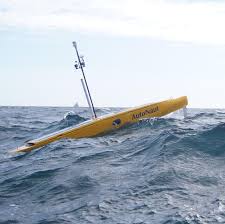
Breaking News
 2 Hours of Retro Sci-Fi Christmas Songs | Atomic-Age Christmas at a Snowy Ski Resort
2 Hours of Retro Sci-Fi Christmas Songs | Atomic-Age Christmas at a Snowy Ski Resort
 Alternative Ways to Buy Farmland
Alternative Ways to Buy Farmland
 LED lights are DEVASTATING our bodies, here's why | Redacted w Clayton Morris
LED lights are DEVASTATING our bodies, here's why | Redacted w Clayton Morris
Top Tech News
 Travel gadget promises to dry and iron your clothes – totally hands-free
Travel gadget promises to dry and iron your clothes – totally hands-free
 Perfect Aircrete, Kitchen Ingredients.
Perfect Aircrete, Kitchen Ingredients.
 Futuristic pixel-raising display lets you feel what's onscreen
Futuristic pixel-raising display lets you feel what's onscreen
 Cutting-Edge Facility Generates Pure Water and Hydrogen Fuel from Seawater for Mere Pennies
Cutting-Edge Facility Generates Pure Water and Hydrogen Fuel from Seawater for Mere Pennies
 This tiny dev board is packed with features for ambitious makers
This tiny dev board is packed with features for ambitious makers
 Scientists Discover Gel to Regrow Tooth Enamel
Scientists Discover Gel to Regrow Tooth Enamel
 Vitamin C and Dandelion Root Killing Cancer Cells -- as Former CDC Director Calls for COVID-19...
Vitamin C and Dandelion Root Killing Cancer Cells -- as Former CDC Director Calls for COVID-19...
 Galactic Brain: US firm plans space-based data centers, power grid to challenge China
Galactic Brain: US firm plans space-based data centers, power grid to challenge China
 A microbial cleanup for glyphosate just earned a patent. Here's why that matters
A microbial cleanup for glyphosate just earned a patent. Here's why that matters
 Japan Breaks Internet Speed Record with 5 Million Times Faster Data Transfer
Japan Breaks Internet Speed Record with 5 Million Times Faster Data Transfer
Autonomous boat gets around under wave power

We're seeing many examples of auto manufacturers aiming to remove the human element from the driving experience, but there are also moves to get robot boats on the water, too. Dutch researchers have been looking into using autonomous vessels for cargo and people transport, the US Navy has demonstrated harbor patrols using unmanned swarmboats and the first electric container ship is due to transition from manned to remotely-operated over the coming years. Meanwhile hobbyists have been busying themselves developing long-haul unmanned surface vehicles powered by the sun, such as the Solar Charger and SeaCharger. Most of the autonomous watercraft we've seen so far follow traditional hull and propulsion designs. The AutoNaut is a little different, packing solar-powered sensors for monitoring marine wildlife and ocean conditions and getting to where it needs to be using energy harvested from the waves it rides on.




The AutoNaut story began way back in 1981 when a skipper aboard a 30 meter schooner wondered if it was possible to make use of the waves to propel a craft, rather than fighting against them. Mike Poole bashed together a rough prototype from an old filing cabinet, toy cogs and a mustard tin and tested it on local river waters. The idea proved to have merit.

 $100 SILVER CONFIRMED?
$100 SILVER CONFIRMED?

